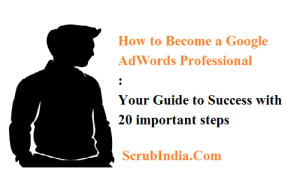
Unleashing the Power of Content Monetization Platforms: A Comprehensive Guide with 5 major challenges
Unleashing the Power of Content Monetization Platforms: A Comprehensive Guide with 5 major challenges In this comprehensive guide, we will explore what content monetization platforms are, how they work, and why they are a game-changer for content creators. In today’s digital age, the internet has revolutionized the way we create, consume, and share content. Content creators, be it bloggers, vloggers, podcasters, or digital artists, have leveraged the vast online landscape to connect with their audiences and share their passions. However, creating and sharing content is not without its challenges, and one of the most pressing issues is how to monetize that content effectively. This is where content monetization platforms come into play, enabling creators to turn their passion into profit. Content monetization platforms have emerged as a vital component of the digital ecosystem, offering creators innovative ways to monetize their content. What is Content Monetization Platforms Content monetization platforms are online tools and services that empower content creators to generate income from their digital creations. These platforms provide a range of monetization methods, making it easier for creators to capitalize on their content while still engaging with their audience. The key to success with content monetization platforms lies in finding the right combination of methods that align with your content, audience, and goals. Key Features of Content Monetization Platforms Diverse Monetization Methods: Content monetization platforms offer a variety of monetization methods, ensuring that creators can choose the ones that best suit their content. Some of the most common methods include advertising, sponsorships, merchandise sales, subscription models, affiliate marketing, and more. Audience Engagement: These platforms facilitate direct interaction between creators and their audience, enabling content creators to understand their viewers better and tailor their content to meet their expectations. Analytics and Data Insights: Most content monetization platforms provide in-depth analytics and data insights that help creators track their performance, understand their audience demographics, and refine their strategies for better results. Payment Processing: Content monetization platforms handle payment processing, making it hassle-free for creators to receive their earnings. They often offer multiple payment options, including bank transfers, PayPal, and more. Revenue Sharing: Many platforms operate on a revenue-sharing model, where creators receive a portion of the income generated through ads, sponsorships, or other revenue streams. This ensures that both creators and the platform benefit from their collaboration. The Power of Content Monetization Platforms Content creators are increasingly turning to monetization platforms for several compelling reasons. Let’s delve into the ways in which content monetization platforms are empowering creators and reshaping the digital content landscape. Diversification of Income Streams One of the primary advantages of content monetization platforms is the ability to diversify income streams. Instead of relying on a single source of income, creators can leverage multiple avenues to generate revenue. For instance, they can combine advertising revenue with merchandise sales and subscription models. This diversification not only increases their overall income but also provides a safety net in case one revenue stream falters. Accessibility for All Content monetization platforms have democratized the digital space, allowing anyone with a passion or expertise to become a content creator and earn money. This accessibility has opened doors for individuals from diverse backgrounds and has created a more inclusive online ecosystem. Flexibility in Monetization Different content monetization platforms offer various monetization options, allowing creators to choose the methods that best align with their content and audience. For instance, a niche tech YouTuber might benefit from affiliate marketing partnerships with tech companies, while a lifestyle blogger may find success with sponsored content or merchandise sales. Enhanced Audience Engagement Content monetization platforms foster stronger connections between creators and their audience. They provide tools for real-time interaction, allowing creators to engage with their viewers through live streaming, Q&A sessions, and more. This level of engagement not only builds a loyal fan base but also provides valuable feedback for content improvement. Improved Visibility Many content monetization platforms have their discovery and recommendation algorithms, which can help content creators gain more visibility. Creators who consistently produce high-quality content and engage with their audience often find their content recommended to a wider audience, increasing their reach and potential earnings. Popular Content Monetization Platforms Now that we understand the benefits of content monetization platforms, let’s explore some of the most popular platforms in the industry, highlighting their unique features and strengths. YouTube YouTube is arguably the most well-known content monetization platform for video creators. It offers several monetization options, including ad revenue, channel memberships, Super Chat during live streams, and merchandise shelf integration. Creators need to meet certain requirements, such as a minimum number of subscribers and watch hours, to qualify for the YouTube Partner Program. Patreon Patreon is a membership platform that enables creators to receive recurring payments from their supporters, also known as “patrons.” Creators can offer exclusive content, behind-the-scenes access, and various membership tiers to incentivize their audience to become patrons. Patreon provides a reliable source of income for many creators, especially those in the art, writing, and podcasting niches. Twitch Twitch is the go-to platform for live-streaming content, primarily focused on gaming. Streamers can earn money through ads, subscriber revenue, and donations from viewers. Additionally, Twitch offers an affiliate program for smaller streamers and a partner program for more established ones. Ko-fi Ko-fi is a platform that allows creators to receive one-time payments, or “coffees,” from their audience. It’s a simple and user-friendly way to accept support for your work without the need for a subscription model. Creators can showcase their projects, set financial goals, and interact with supporters. Substack Substack is a platform designed for writers and journalists. It offers tools for creating subscription-based newsletters and blogs. Creators can charge readers for premium content and have full control over their subscriber lists and content distribution. OnlyFans OnlyFans gained fame as a platform where creators can share adult content, but it has since expanded to include a variety of content types. Creators can set subscription prices for their content, and fans pay to access it. OnlyFans has









